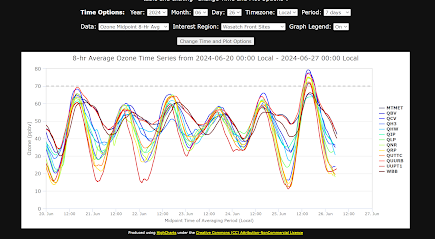Tuesday, May 28th, 2024.
I had to rush through eating my breakfast and getting my bags set for the ride to the airport. Lots of things were flowing through my mind, I had been preparing for this for months, and now the day was finally here. After a long wait in many lines, I boarded the plane for Salt Lake. The flight was quick and calm, minus a little rough air towards landing. Once I touched down, I picked up my bags and went outside to be picked up and taken to the U. After a 15-minute ride, we arrived, and I got my first glimpse of the place I will call home for the next 10 weeks. It was beautiful, tree lined streets and lovely buildings, all tucked along the stunning Wasatch range. It was time, today was my first day in the REALM program.
But wait, what is the REALM program?
REALM stands for “Research Experience in Alpine Meteorology”. It is a 10-week undergraduate research program, also known as an REU (Research Experience for Undergrads), stretching from late May to early August. Within the program, mentees can get exposure to research opportunities in Atmospheric Science, with topics ranging from air quality, to fire weather, climate, mountain weather, and much more!
Mentees get paired with mentors to help them in their journey. My mentors are Dr. John Horel and Colin Johnson. At the end of the program, mentees will present a poster at a symposium, showing the results of their research. I wonder what my poster will end up looking like, and just as importantly, how will I get there.
The first couple of days were mostly about getting settled in and meeting everyone. I met my fellow mentees at a welcome event, all of them both as excited and nervous as I was. Later, I met Dr. Horel and Colin, who were very supportive, and are determined in making sure that my experience here at the U and the REALM program will be not only educational and enriching, but fun as well. I also met ATMOS students Peter and Brett. I really look forward to working with everyone to have an experience we can all be proud of!
Soon after however, things would quickly pick up!
Just three days after I flew into Salt Lake City to start my journey with the REALM program, I joined Colin, Peter, and Brett in going to the Red Butte Canyon Research Natural Area!
The Red Butte Canyon Natural Research Area, which from here I'll call RBC for short, is an area of land in the Wasatch range, just behind the University. It was originally owned by the US Army in the mid to late 1800's, it has since fallen under the domain of the US Forest Service. The purpose of the RBC is to have an area set aside exclusively for research in many areas, that includes (but certainly are not limited to) water quality, climate studies, Biogeochemistry, surface/ground water interactions, and much more!
Here is a photo of Miller Park, one of the many areas within RBC:
The objective of the trip was to find the Knowlton Fork repeater, which had gone missing. Because of this, the Knowlton Fork weather station was offline. After a very bumpy ride, we got to the trail and started our hike. You can see the path we took to get to the area where we thought the repeater was located below, also showing the location of the Knowlton Fork weather station:
To give you a better idea just how far we went, here is a view of the total distance, with the area in the bottom left corner being the University campus:
Pretty high up isn't it?!
I was taken aback by the beauty of RBC, featuring a creek and tree covered mountains surrounding you on all sides! I'll let you see for yourself:
After a long walk, we found the hill where we suspected the missing repeater was. Upon going about halfway up the very steep hill, I unfortunately had to turn back around and go down due to being underprepared for the difficulty of the climb. It's not as easy as it looks! Luckily however, Colin and Peter were able to find the repeater!
On the way back down, we stopped by the Knowlton Fork, Todd’s Meadow, and ABRB stations. After working some magic, we got the Knowlton Fork station back online:
Here's Peter, decked in a safety harness, helping to perform some quality checks to make sure the anemometer was sending accurate wind speed and direction data:
Once we verified all the stations were online and reliably sending accurate data, our work for today was done.
We ended the day by having some refreshing ice cream! A nice treat after a long hike!
It was quite a day to start off my REALM experience, but I really enjoyed it, and it makes me excited to see what opportunities the future holds for me as I traverse the REALM program!










































.jpg)


